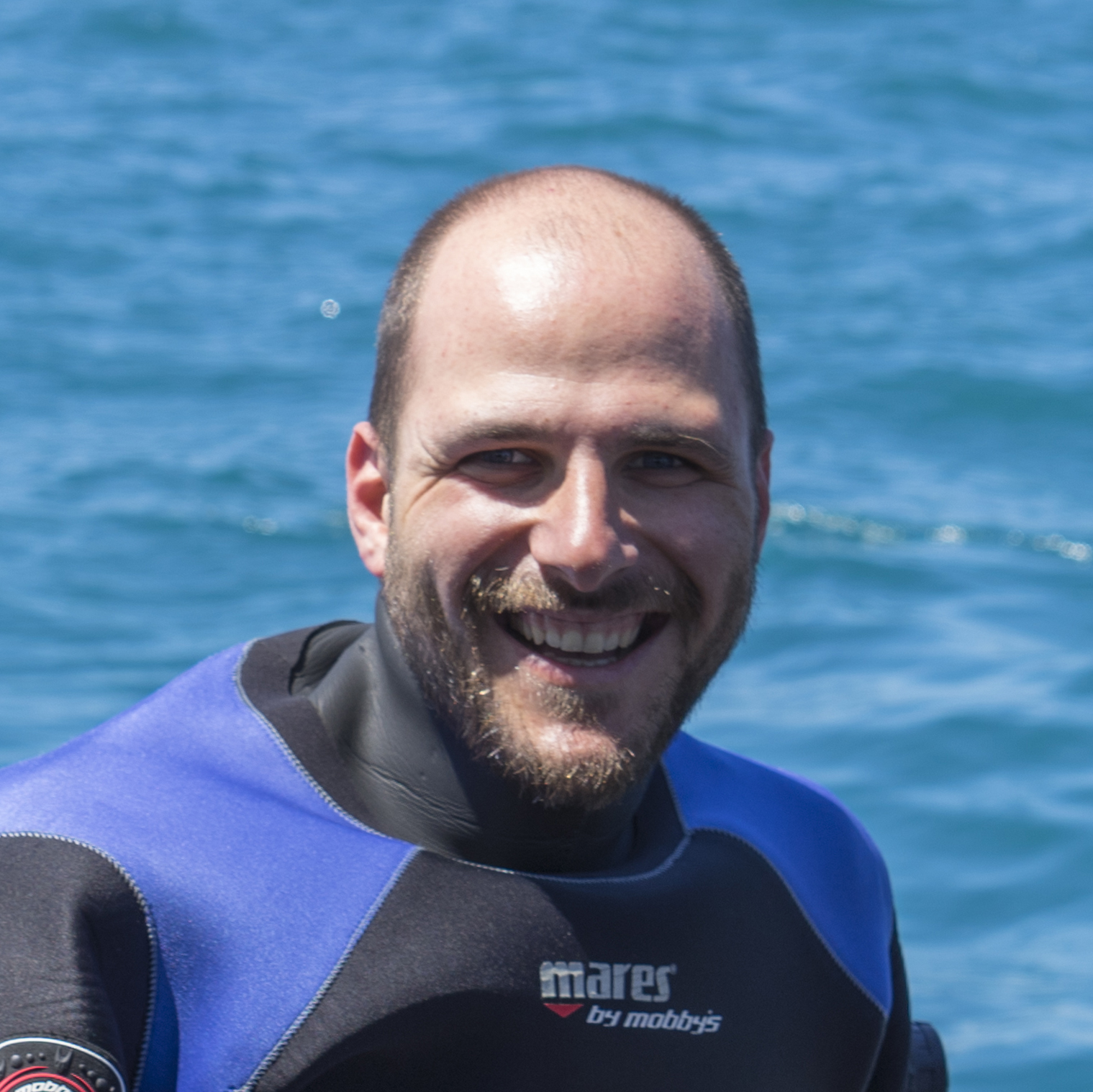
People
Group leader
Professor of Marine Biology
School of Biological Sciences
Postdoctoral research assistants

Effects of anthropogenic stressors on temperate subtidal sponge assemblages
Coastal ecosystems are among the most productive biomes on the planet, but also among the most vulnerable. A large variety of anthropogenic impacts are threatening their integrity, and consequently, their capability to provide goods and services. Among these, eutrophication is considered one of the main stressors. Lough Hyne is a fully marine sea lough located in the south-west of Ireland. It was designated as Europe's first Marine Nature Reserve in 1981 for its extraordinary biodiversity. Unfortunately, during the last decade the benthic assemblages of the lough experienced drastic changes, probably related to eutrophication-driven processes. The aim of my research is to investigate the effects of anthropogenic stressors on temperate subtidal benthic assemblages, with a major focus on sponges. In particular, the project aims to characterize the changes that occurred in the subtidal communities at Lough Hyne, investigate the possible causes though tolerance experiments to key stressors, assess the trophic consequences of the sponge decline and finally evaluate the potential of an active restoration action of the key structuring species.
Doctoral students

Nora Kandler
Long-term impacts of climate change on sponge and associated microbial community function
Ocean acidification (OA) and increasing sea surface temperature (SST) caused by global warming are threatening modern coral reef ecosystems. Calcifying organisms have been the focus of climate change studies in the past, but it is becoming more important to consider the potential of alternative reef states, such as sponge reefs. Sponges play many important roles in reef environments and have shown to be more tolerant to changing ocean conditions than corals in some locations. However, there is a lack of literature looking at the impacts of OA and SST on sponges simultaneously and for more than a few months. The overall aim of my research is to examine the impacts of IPCC-predicted future scenarios on the function of sponges and their microbial communities over a period of two years.
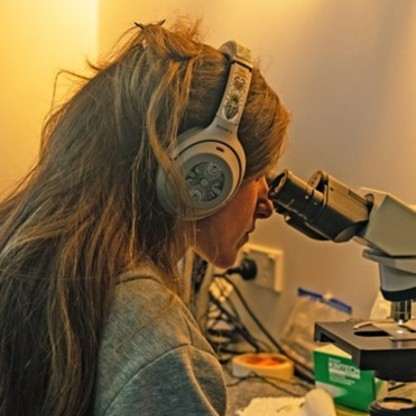
Francesca Strano
Impacts of climate change on the reproductive ecology of temperate sponges
Depending on their adaptive capacities, organisms may be more or less resilient to environmental variation, therefore it is important to assess the responses of natural populations to future climatic conditions in order to effectively manage and conserve marine communities. Sponges are considered the most ancient and simplest metazoans on Earth and are important members of the marine ecosystem at all depths and latitudes, as a result of the large number of ecological functions that they perform. Sponge health is strictly linked to the stability of their symbiotic microbial communities and for this reason, they are generally considered as holobionts. Interestingly, the early life stages of some tropical sponges may show higher thermal tolerance than their respective adults, suggesting an increasing gradient of thermal sensitivity with sponge aging. The aim of my Ph.D. is to assess the impacts of predicted temperatures for 2100 (IPCC) on the reproductive ecology of temperate sponges. In particular, I’m interested in possible carryover and transgenerational effects of thermal stress on the holobiont stability of temperate sponges. To address this aim I combine physiological and molecular approaches.
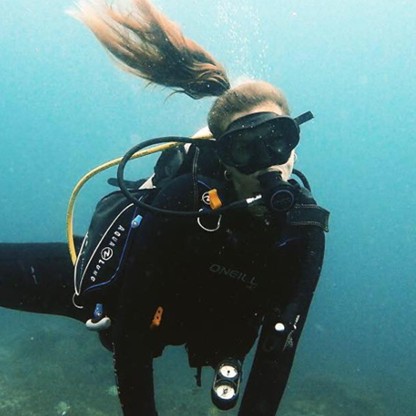
Manon Broadribb Payne
Given that all marine ecosystems are being impacted by climate change, identifying areas where reef communities remain at least partially intact has become an important conservation priority. Considerable research focus has concentrated on the impacts of climate change in the shallow seas, and it has become startlingly clear that shallow reefs worldwide are under threat. My research focuses on investigating whether deeper, mesophotic reefs could act as a refuge and source of propagules to these shallow habitats if shallow populations die out. Since sponges are the dominant benthic organism on mesophotic reefs around New Zealand, I plan to focus on assessing the level of connectivity between shallow and mesophotic sponge habitats in order to test this theory.
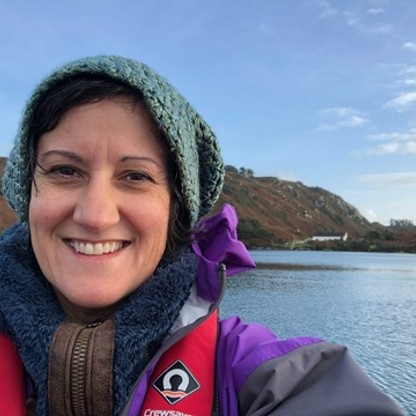
Gabriela Wood
Eutrophication and temperature stress as direct and indirect drivers of change in temperate sponge assemblages
Marine sponges can be found across all latitudes and depths on our planet. Given their vast range, their contribution has been shown to provide essential services to their respective ecosystems. Among many of their functional roles, their high pumping efficiencies contribute to nutrient cycling from the benthos into the water column. This “sponge loop” is similar to the “microbial loop” in many ways – in fact – the sponge symbionts facilitate much of the nutrient processing. Employing both in situ and laboratory experiments involving differing single- and multi-stressor effects, I aim to better understand both external (feeding) as well as internal (symbionts and lipidology) processes with respect to nutrient and temperature stress. These stressors seem to play a major role in eutrophication processes which could explain the massive decline in sponge abundances observed in Lough Hyne, a small marine sea lough in Southwest Ireland and a great study site for understanding eutrophication processes.
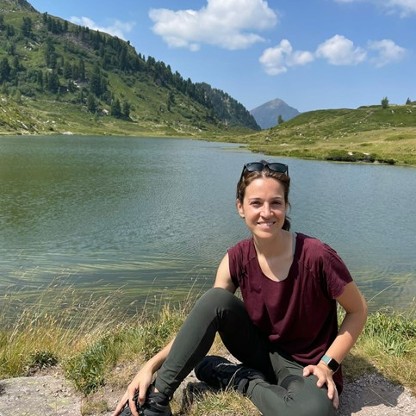
Miriam Pierotti
Ecology and resilience of the black coral Antipathella fiordensis to environmental stressors
Antipathella fiordensis is a nationally important and iconic species that is endemic to New Zealand. It is classified as an ‘at risk’ species due to its restricted range, being found only in the Fordland region. This species is unique amongst other black coral species in New Zealand as it can be found in very shallow water (< 5m) and large colonies can be over 300 years old, making them one of the oldest shallow water organisms in New Zealand. The long-life span, restricted range and shallow distributions makes A. fiordensis particularly susceptible to anthropogenic impacts. The aim of my project is to increase our understanding of the ecology of the black coral Antipathella fiordensis in Fiordland and determine how this species will respond to environmental impacts. It is anticipated that this information will support the future management, protection, and conservation of important species.

